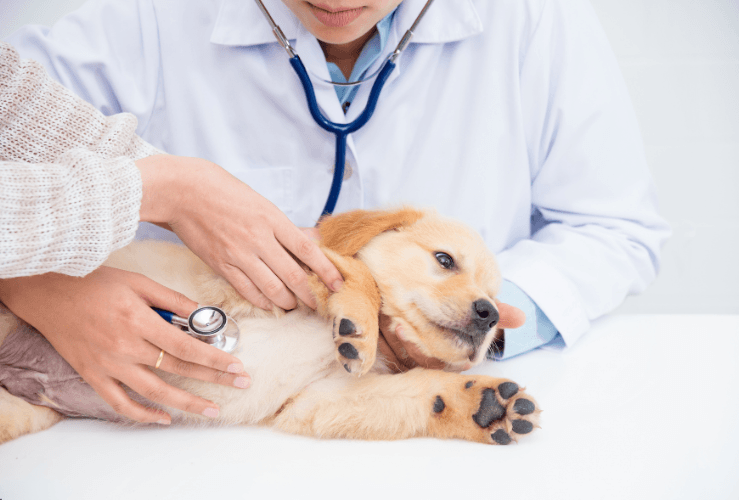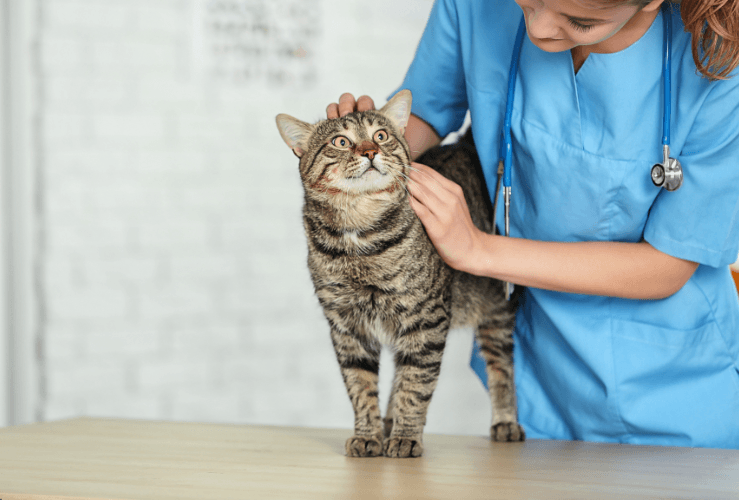What is pet insurance?
Pet Insurance is designed to assist the owner with unwelcome vet bills if a pet requires treatment for illness or accidents.
Depending on what type of pet insurance policy you decide on will determine what costs are covered.
With some pet insurance policies, you can claim in the event of the death of your pet, if your pet is stolen or lost, or if it causes damage to a third party’s property.
Do I need pet insurance?
Having pet insurance is not mandatory and it is something that none of us like to think about and pay for. But just like your car and home should be covered against the unexpected, owning a pet should be thought of in the same way.
Our pets mean a lot to us and it is never easy to think of them falling ill or getting injured, but it is something that could happen.
Having the safety net of pet insurance, means that vet bills are one less thing to worry about if your pet requires treatment.
There are many expenses involved in owning a pet, so pet insurance cover against unexpected vet bills could be very beneficial. Especially considering cats and dogs are prone to specific illnesses that require veterinary help that can rack up considerable costs.
If you have, or are looking to get, a purebred dog then you’ll probably know the likelihood of it developing a problem. For example, Golden Retrievers and other large purebreds are susceptible to hip dysplasia, which can cost up to £7,000 to treat.
Your dog or cat may also suffer from multiple illnesses as it becomes older. Numerous trips to the vet in your pet’s later life will obviously incur greater on-going costs, which could be eased with the right pet insurance policy.

Is pet insurance worth it?
Deliberating the worth of any insurance is very much personal and those of us that do decide to purchase a pet insurance policy appreciate the peace of mind it can afford us.
You’ll need to decide whether or not you could afford the costs involved in treating your pet in the event of illness or injury or even the expense concerned with a lost or stolen pet.
If you don’t want to deal with a large vet bill it may be prudent to get a pet insurance quote and see if you’ll feel more comfortable paying monthly for an insurance policy.
What types of pet insurance are there?
Although you will find that there are many different pet insurance cover levels, offering varying features and benefits, there are essentially four types of policy.
Accident only
As these policies only cover your pet for accidents and injuries, it is usually the cheapest option.
Your pet is generally not covered for illness with an accident only policy. And it’s worth mentioning that the majority of pet insurance claims are due to illness, so an accident only pet insurance policy may leave you out of pocket in the long run.
An accident-only policy usually has a set maximum amount per accident that you can claim, as well as a set maximum amount throughout the duration of the policy.
Time-limited
A time-limited policy is restricted by the length of time (usually a 12 month period) as well as maximum claim amount for an injury or illness.
If you reach the capped limit of claim amount or time, your cover will stop, even if your pet is in mid-treatment.
A time-limited pet insurance policy is typically suited to older pets or those needing short-term illness or injury treatment. However, recurring vet bills will not be covered once the policy comes to an end, which could leave you with an unwanted on-going vet bill.
Older dogs and cats are often not eligible for lifetime pet insurance, meaning time-limited pet insurance is the best way to cover your four-legged (or two-winged) companion.
Maximum benefit
This policy provides insurance indefinitely, provided you renew your policy. However, there is a maximum amount of vet fees covered per condition. Once this maximum amount has been reached, your pet will no longer be covered.
You may be looking at taking out a maximum benefit pet insurance policy if you have a younger pet, or your pet is likely to suffer from recurring illnesses that requires a medium level of cover.
Lifetime
The most comprehensive pet insurance that, if renewed, provides cover for the whole life of your pet.
You can claim the same amount each year, no matter how many claims you might have to make.
This policy is ideal if your pet picks up a long-term illness which requires regular on-going treatment at significant expense.
Please be sure to fully read the policy terms to understand if there are any limits imposed on claiming for vet bills against certain illnesses or procedures.

What does pet insurance typically cover?
Pet insurance policies and levels of cover can vary quite considerably, so we strongly advise you to read the full policy terms to completely understand that the policy you choose is the right one for you.
It is not always best practice to opt for the cheapest pet insurance policy available, as it may not provide the cover that you think you’ll need or want for your pet.
Even though you’ll likely find variances across different insurers, most of them share certain features, often including:
- Vet fees
- Specific medical expenses
- Compensation for death by accident or illness
- Advertising or recovery costs if your pet is lost or stolen
- Dental work
- Third-party damage to property or another animal
How much is pet insurance?
The average price of pet insurance is £360 per year or £30 a month. The exact cost of pet insurance depends on a number of factors, such as:
- Where you live
- How old your pet is
- What type and breed of pet you have
- If your pet has any history of medical issues
- What pet insurance policy you choose.
How to reduce the cost of pet insurance?
The cost of owning a pet and paying out for pet insurance is not an inconsiderable amount so any way to reduce the cost of your pet insurance is likely to be a welcome one.
If you consider the following tips when requesting your quote, you might end up paying less for your premium.
Look after your pet’s health
- Make sure your pet is vaccinated correctly
- Protect them against fleas and worms
- Stay on top of their dental health
- Give them plenty of exercise and a healthy diet.
Reducing the chance of claiming means premiums are less likely to rise – prevention is better than cure.
- Think about neutering or spaying your pet. Spaying or neutering your pet can reduce its potential to stray and develop a number of different conditions. Doing so could result in lower premiums.
- Micro-chip your pet. Due to legislation changes, most insurers will require your dog to be micro-chipped. It also helps keep tabs on your pet if they do go missing.
- Insure your pets when they’re young and healthy. Quotes for older pets that have a pre-existing condition will always be more expensive than quotes for a young and healthy pet. Remember to tell your insurer everything they need to know to avoid being refused a claim in the future.
- Increase the excess you pay. You can choose to increase the excess you will have to pay on your policy which will lower your premium. However, make sure you are able to pay the excess if you do have to make a claim.
- Only purchase the cover level you need. Don’t fall in to the trap of being covered for more than you require. You may just need the cheaper limited cover if you’re certain that you can cover the costs if your pet needs to have on-going continuous treatments.
- Cover more than one pet. If you have more than one pet that you’d like to insure, check which insurers provide a discount for multi-pet cover.

Pet insurance comparison
Use the Quotezone.co.uk comparison tool to compare pet insurance quotes.
Having a number of quotes to choose from is a great way to understand what you require and what price you are willing to pay for your pet insurance.
What doesn’t pet insurance cover?
With so many different insurers each providing their own level of pet insurance cover it’s no wonder some people just choose the cheapest option available to them. You could get lucky doing this and choose the cover level suitable for you, but it makes sense to research the type of pet insurance policy you really require.
We highly recommend taking time over your pet insurance decision and carefully reading through the policy terms to fully understand what is and isn’t covered.
Some policies exclude certain things which you might believe are necessary.
There are a number of common treatments that are often excluded from a standard pet insurance policy. Routine vaccines, pregnancy and birth expenses, flea and worm control, as well as neutering and spaying are frequently excluded from policies.
Most pet insurance providers will also not offer cover for any pre-existing medical conditions, or cover illnesses that begin within the first 10-14 days of your pet insurance policy.
Can you change pet insurance?
Yes, it is possible to change your pet insurance – And doing so, even if you have not had any issues with your current provider, may be worthwhile.
Even if you already have a pet insurance policy in place, it is worth using our comparison tool to see if changing pet insurance provider could be of benefit.
For example, you may be able to find a pet insurance policy that offers:
- Lower cost: You may find a new policy that offers the same level of cover as your current policy, but for a lower price.
- Increased coverage limits: A new policy may have higher coverage limits or a lower excess, which can help to lower your overall costs.
- Better coverage for your pet’s needs: An alternative pet insurance policy may cover conditions or treatments that your current policy does not.

How much do vet appointments cost?
A typical cost of a consultation and diagnosis is approximately £60. If your pet requires any further treatment then your vet bill will increase dependent on what the treatment is.
Vet bills can certainly add up if your four-legged companion manages to get itself insured or develops an injury.
Animal Trust veterinary costs (March 2023)
- Cherry Eye: £469
- Eye Removal: £469
- Surgery to remove an Intestinal / Gastric Foreign Body: £929
- Endoscopy: £929
- Xray: £369
- Ultrasound Scan: £82.50 - £369
- CT Scan: £929
It is worth bearing in mind Animal Trust is a not-for-profit veterinary organisation. As such, you could find veterinary treatment costs at your local vets far exceed those charged by the Animal Trust.
Listed below are some typical vet costs associated with treating common injuries and health problems for cats and dogs:
- The average cost for treating a cat’s respiratory condition is £726
- Surgery for a cat’s broken tibia cost nearly £2000
- Treating a small dog with gastroenteritis can cost £673
- It can cost over £3300 to treat a dog diagnosed with epilepsy
- Treating a dog with diabetes can cost over £1200
- Specialist treatment and surgery for a puppy with hip dysplasia can cost over £13,000
- Treatment for a cat suffering from soft tissue sarcoma can cost over £12,200

Does pet insurance cover BOAS surgery?
Brachycephalic Obstructive Airway Syndrome (BOAS) is common in breeds like French Bulldogs and Pugs.
In most cases, as long as a dog has not shown any symptoms of BOAS respiratory condition before commencing your insurance, the condition will be covered by the policy.
It is advisable to check full details of will / won’t be covered by the pet insurance policy prior to purchase.
How does pet insurance work?
Once you have a pet insurance policy in place, if your furry friend requires veterinary treatment, you will be required to submit a claim to your insurance provider for the treatment your pet received.
Some insurers will require you to pay for the veterinary treatment costs upfront and will then reimburse you, or your insurance provider may pay the vet directly if you haven’t already made payment,
How to claim pet insurance
Generally, you’ll be required to download a claim form from your insurance provider’s website, which you’ll need to complete and email to them.
With some pet insurance providers, you may be able to make your claim entirely online.

What information will be required to make a claim on my pet insurance policy?
Your provider is likely to require you to confirm:
- Your personal details
- Details about your pet including its age, breed and microchip number
- Details of the illness, injury or condition, or details of the event you are claiming for if non-medical
You will also be required to provide copies of any receipts or invoices relating to your claim.
If you are claiming for medical costs, it is likely that some parts of the claim form will need to be completed by the vet that treated your pet.
What do I need from my vet to claim?
If you are claiming for medical costs, parts s of the claim form that will need to be completed by the veterinary practice that treated your pet are likely to include details of the diagnosis and treatment your pet has received, along with the costs of the treatment.
You will need the invoices issued by the veterinary practice for the treatment of your animal.
If it is the first time you are claiming you will need to provide your pet’s full clinical history. You can ask your vet for your pet’s full clinical history; you will need to contact any other vets that you have visited too.
Does claiming on pet insurance increase my premium?
A number of factors are taken into account when calculating the cost of your pet insurance premium.
Your insurer may increase your premium at renewal if you have made a claim, but factors such as your pets increase in age may also contribute to a rise in premium at renewal.
The information contained within this webpage is for editorial purposes only and not intended as financial advice.

